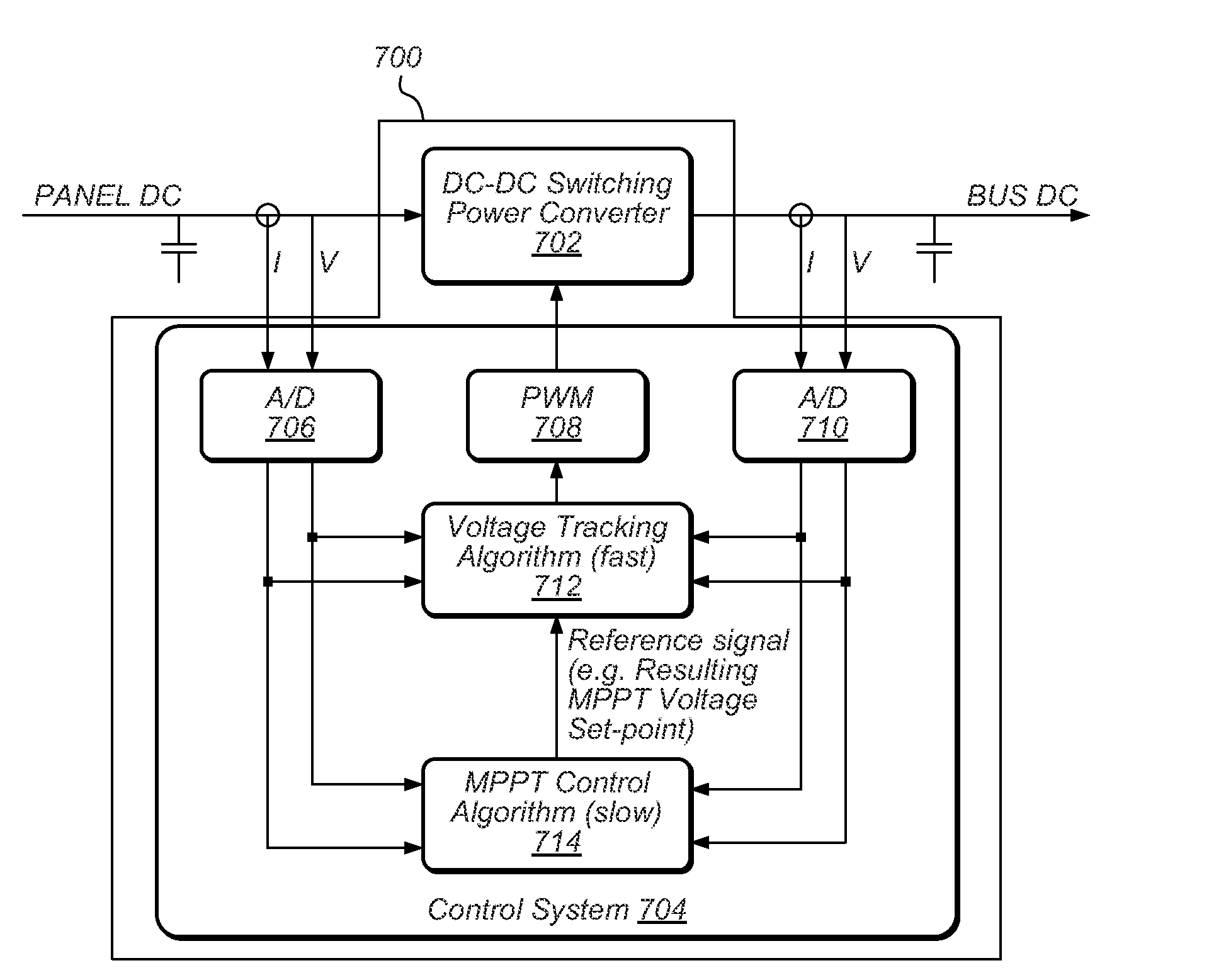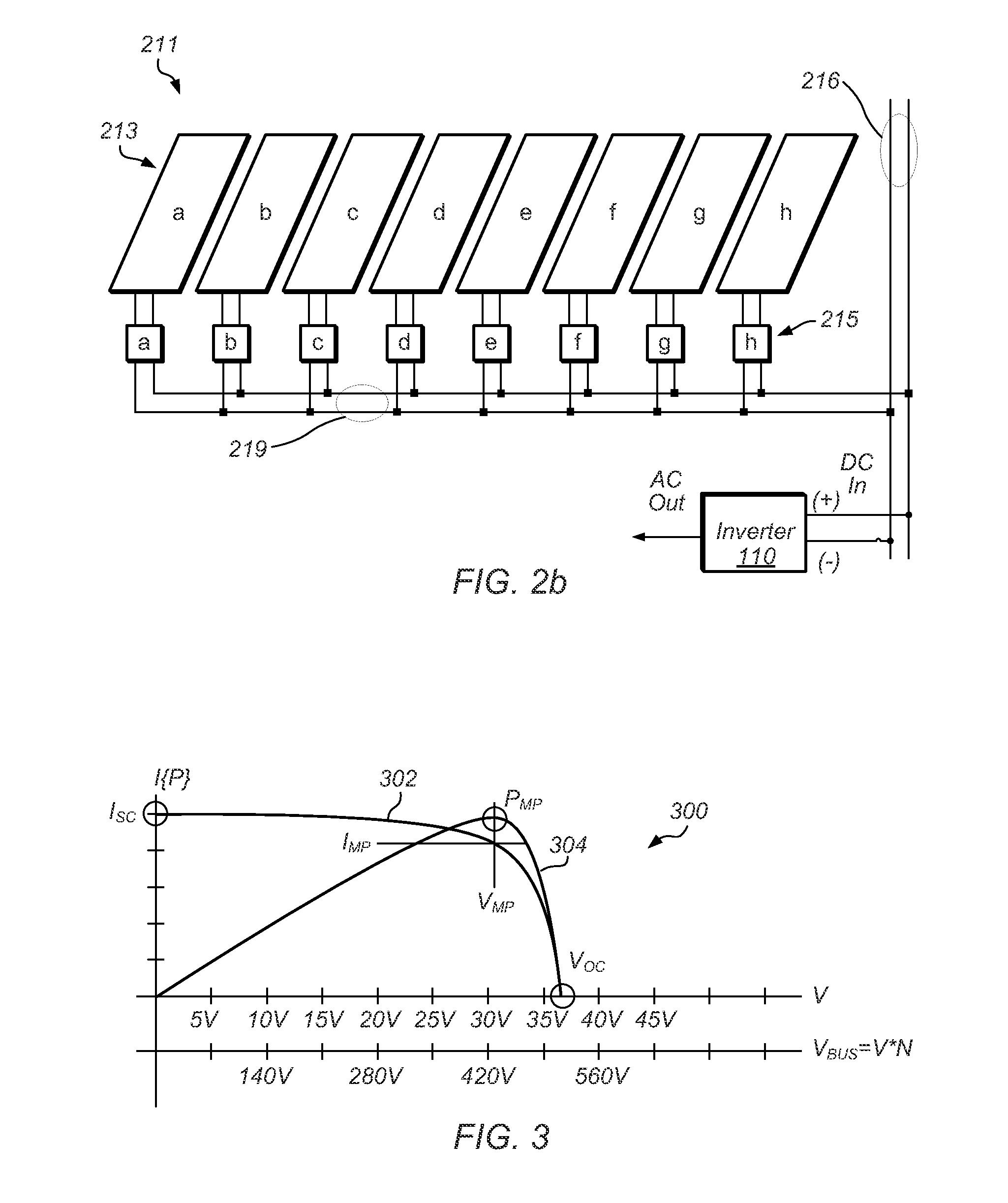Dynamic Frequency and Pulse-Width Modulation of Dual-Mode Switching Power Controllers in Photovoltaic Arrays
a technology of switching power controller and dynamic frequency, which is applied in the direction of electric variable regulation, process and machine control, instruments, etc., can solve the problems of increasing the loss of panel mismatch, increasing the power produced by a single solar panel, and increasing the voltage between two electrodes, so as to achieve the reduction of the switching frequency required to support optimal operation and the effect of significant improvement of the potential efficiency of the converter
- Summary
- Abstract
- Description
- Claims
- Application Information
AI Technical Summary
Benefits of technology
Problems solved by technology
Method used
Image
Examples
Embodiment Construction
[0036]In solar array systems, many non-idealities may be mitigated by utilizing distributed Maximum Power Point Tracking (MPPT). Distributed MPPT usually includes insertion of a DC / DC converter or a similar power converter behind solar panels in the array, most commonly behind each and every solar panel in the array, to adapt the coupled solar panel's power transfer onto a high-voltage bus (typically a high-voltage DC bus) which connects the panels together via the DC / DC converters. A typical solar array 100 is shown in FIG. 1. Solar panel series-strings 102, 104, and 106 are coupled in parallel to bus 108, which may be a DC / DC bus. Each solar panel series-string includes solar panels coupled in series to a respective bus, each of those respective buses coupling to bus 108 as shown to obtain parallel-coupled solar panel series-strings. An inverter 110 is coupled to bus 108 to ultimately drive a connected load, which may be coupled to the output of inverter 110.
[0037]An example of th...
PUM
 Login to View More
Login to View More Abstract
Description
Claims
Application Information
 Login to View More
Login to View More - R&D
- Intellectual Property
- Life Sciences
- Materials
- Tech Scout
- Unparalleled Data Quality
- Higher Quality Content
- 60% Fewer Hallucinations
Browse by: Latest US Patents, China's latest patents, Technical Efficacy Thesaurus, Application Domain, Technology Topic, Popular Technical Reports.
© 2025 PatSnap. All rights reserved.Legal|Privacy policy|Modern Slavery Act Transparency Statement|Sitemap|About US| Contact US: help@patsnap.com



